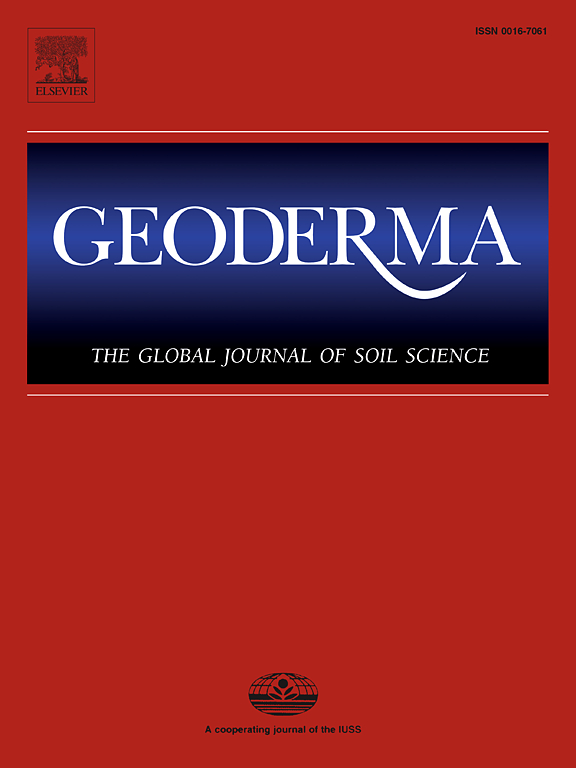联邦学习在土壤光谱学中的应用
IF 5.6
1区 农林科学
Q1 SOIL SCIENCE
引用次数: 0
摘要
土壤光谱学已经成为快速、非破坏性土壤特性预测的关键技术,但机器学习模型训练的集中性引发了对数据隐私、可访问性和可转移性的担忧。本研究提出了将联邦学习(FL)作为分散的土壤光谱方法的应用,使多个数据贡献者(或客户端)之间能够协作,而无需交换原始数据。利用来自凯洛格土壤调查实验室的VNIR或MIR光谱数据,使用卷积神经网络来估计土壤的关键属性,如土壤有机碳、质地、pH值、阳离子交换和总氮。研究人员探索了三种数据划分方法,包括地缘政治、生物气候、独立和同分布(IID)分裂方法,以模拟土壤群落特别感兴趣的各种现实世界场景。每个场景都在两种不同的平均聚合策略下进行了研究:联邦平均(FedAvg)和加权平均(WgtAvg),这两种策略用于通过聚合不同贡献者的权重来开发共识模型。结果表明,FL框架可以匹配甚至在某些情况下超过集中式模型的性能,特别是在使用IID数据时。WgtAvg策略在提高预测精度方面特别有效,甚至在数据大小不等的土壤特性方面提高了50%。本研究强调了FL作为跨土壤实验室网络的隐私保护框架的潜力,通过分散的全球模型促进加强土壤健康监测。本文章由计算机程序翻译,如有差异,请以英文原文为准。
Federated learning applications in soil spectroscopy
Soil spectroscopy has emerged as a key technique for rapid, non-destructive soil property prediction, yet the centralized nature of the training of machine learning models raises concerns around data privacy, accessibility, and transferability. This study proposes the application of Federated Learning (FL) as a decentralized approach to soil spectroscopy, enabling collaboration between multiple data contributors (or clients) without requiring the exchange of raw data. Convolutional neural networks were used to estimate key soil attributes such as soil organic carbon, texture, pH, cation exchange, and total nitrogen using VNIR or MIR spectral data from the Kellogg Soil Survey Laboratory. Three data partitioning approaches were explored involving geopolitical, bioclimatic, independent, and identically distributed (IID) splitting methods to simulate various real-world scenarios of particular interest to the soil community. Each scenario was investigated under two different averaging aggregation strategies: Federated Averaging (FedAvg) and Weighted Averaging (WgtAvg), which are used to develop a consensus model by aggregating the weights of the different contributors. The results show that the FL framework can match, and in some cases exceed, the performance of centralized models, particularly when using IID data. The WgtAvg strategy was particularly effective in boosting prediction accuracy even by 50 % for soil properties where contributors had unequal data sizes. This study highlights the potential of FL as a privacy-preserving framework across networks of soil labs, facilitating enhanced soil health monitoring with decentralized global models.
求助全文
通过发布文献求助,成功后即可免费获取论文全文。
去求助
来源期刊

Geoderma
农林科学-土壤科学
CiteScore
11.80
自引率
6.60%
发文量
597
审稿时长
58 days
期刊介绍:
Geoderma - the global journal of soil science - welcomes authors, readers and soil research from all parts of the world, encourages worldwide soil studies, and embraces all aspects of soil science and its associated pedagogy. The journal particularly welcomes interdisciplinary work focusing on dynamic soil processes and functions across space and time.
 求助内容:
求助内容: 应助结果提醒方式:
应助结果提醒方式:


